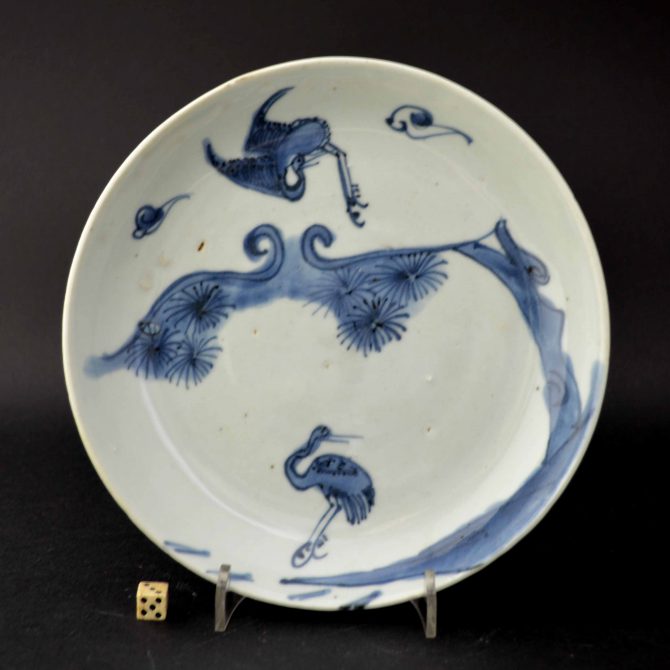
A Ming Porcelain Dish for the Japanese Market, Transitional Period, Tianqi 1621 – 1627.
A Ming Blue and White porcelain dish, Tianqi period 1621 – 1627. This small small porcelain dish was made for use in the Japanese Tea Ceremony. It depicts two cranes among pine trees.
SOLD
- Condition
- Excellent, a minute rim frit.
- Size
- Diameter : 16.7cm (6 1/2 inches)
- Provenance
- From a Private Collection of Chinese and Japanese Porcelain.
- Stock number
- 24750
Information
Ming Porcelain for Japan :
During the late Ming Period the Chinese made a large among of porcelain for the Japanese market, it was made from the Wanli period (1573-1620) and ended in the Chongzhen period (1628-1644), the main period of production being the 1620`s and 1630`s. The porcelain objects produced were made especially for the Japanese market, both the shapes and the designs were tailored to Japanese taste, the production process too allowed for Japanese aesthetics to be included in the finished object. Its seams firing faults were added, repaired tears in the leather-hard body were too frequent to not, in some cases, be deliberate. These imperfections as well as the fritting Mushikui (insect-nibbled) rims and kiln grit on the footrims all added to the Japanese aesthetic. The shapes created were often expressly made for the Japanese tea ceremony meal, the Kaiseki, small dishes for serving food at the tea ceremony are the most commonly encountered form. Designs, presumably taken from Japanese drawings sent to China, are very varied, often using large amount of the white porcelain contrasting well with the asymmetry of the design.
Cranes / He :
One of the most important birds represented in Chinese art is the crane, He. It is a very popular motif representing longevity, it often combined with other longevity symbols such as the pine or shoulou. It`s white feathers further emphasis the connection with long life. Folklore says the crane can live more than six hundred years and has the ability to carry the souls of the dead to the Western Paradise. A pair of cranes represents a wish for a long marriage, a crane can be used in a pun for `together`. A crane flying is symbolic of a wish for a rise in status, among the nine ranks for civil officials the crane represents the first rank.

